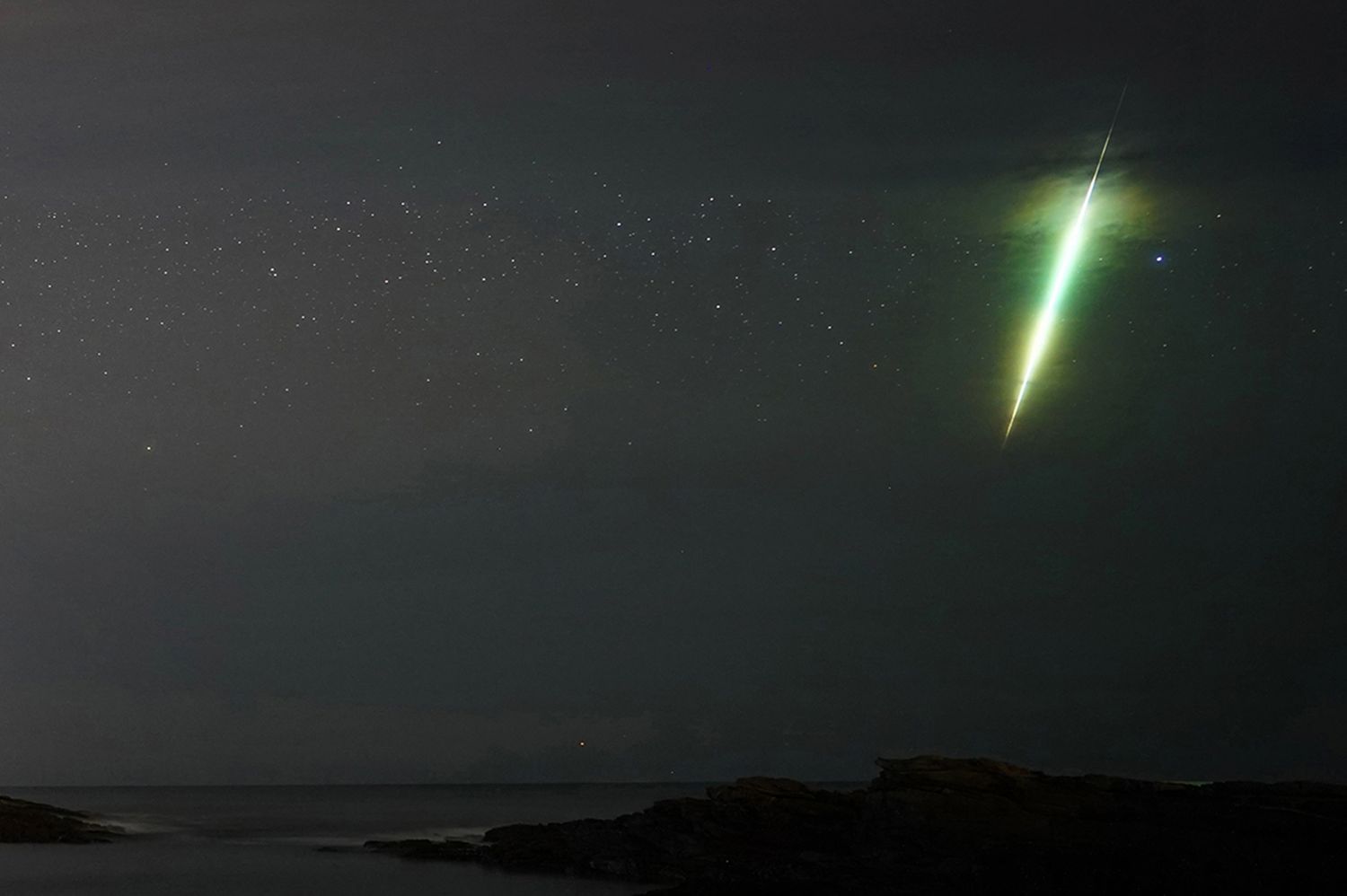:max_bytes(150000):strip_icc():format(jpeg)/TAL-draconid-meteor-shower-FIREBALLSHWR1025-0a8aee5699154906a17ad04d30293626.jpg)
Cross your fingers for a spectacular show on Wednesday night.
Oct. 8 marks the peak of the annual Draconid Meteor Shower—a famously unpredictable event that can produce anywhere from a handful to over a thousand shooting stars per hour.
The Draconid shower is started on Oct. 6 and lasts through Oct. 10. There are typically 10 meteors per hour visible during its peak, but some experts are predicting a much more dramatic show in the sky this year. Every few decades or so, the Draconids create a massive outburst with hundreds of meteors an hour visible from some locations on Earth. The last outburst peaked on Oct. 8, 2011.
An even rarer—and more exciting—possibility is a Draconid meteor storm, the likes of which last dazzled stargazers in 1946. With over 1,000 meteors visible per hour, it reportedly looked as if “the stars were falling like rain.”
Although the Draconids are always suspenseful, the odds of an outburst or storm occurring are slightly higher this year. Because the meteors’ parent comet, Comet 21P/Giacobini-Zinne, recently reached its closest point to the sun in March 2025, dense, fresh debris could make for a dramatic showing. In fact, NASA researchers predicted a “significant outbursts.”
In addition to being excitingly unpredictable, the Draconids are one of the most convenient showers of the year for casual stargazing. While most showers, like the August Perseidsare best viewed after midnight, the Draconids will be high in the sky much earlier in the evening. The best time to watch the fireballs will be just after sunset on Oct. 8. That means no all-nighters are necessary to witness the potentially historic event.
However, the moon is in a bright waning gibbous phase after the full supermoon on Oct. 6, and the competing light source could significantly lessen our ability to see the fireballs from Earth. If you’re an optimist, consider that the moon was full on that miraculous October night in 1946.
The best way to find out how spectacular it gets is to turn your eyes to the sky just after nightfall on Oct. 8.
The shower’s name comes from the constellation Draco, which means “Dragon” in Latin. Since the titan creature coils around the north celestial pole, the meteors will come from the constellation Draco in the northern sky, and the best views will be in the Northern Hemisphere—including all across the U.S.
As always, this astronomical event is best viewed from a dark sky area. If possible, block the moonlight with a tree or other natural barrier to increase visibility.
In addition to the Draconids, experts say the Northern Lights may be visible on Oct. 8. It’s been a dramatic year for the aurora borealis: The sun is currently at its once-in-11-years solar maximum, when the geomagnetic storms that produce Northern Lights are stronger and more frequent.





